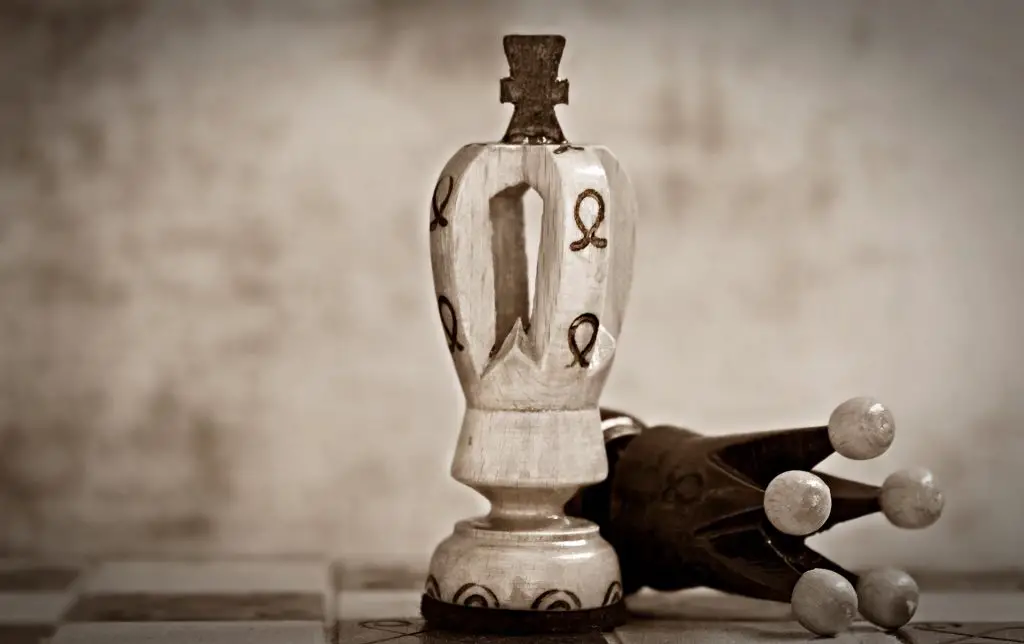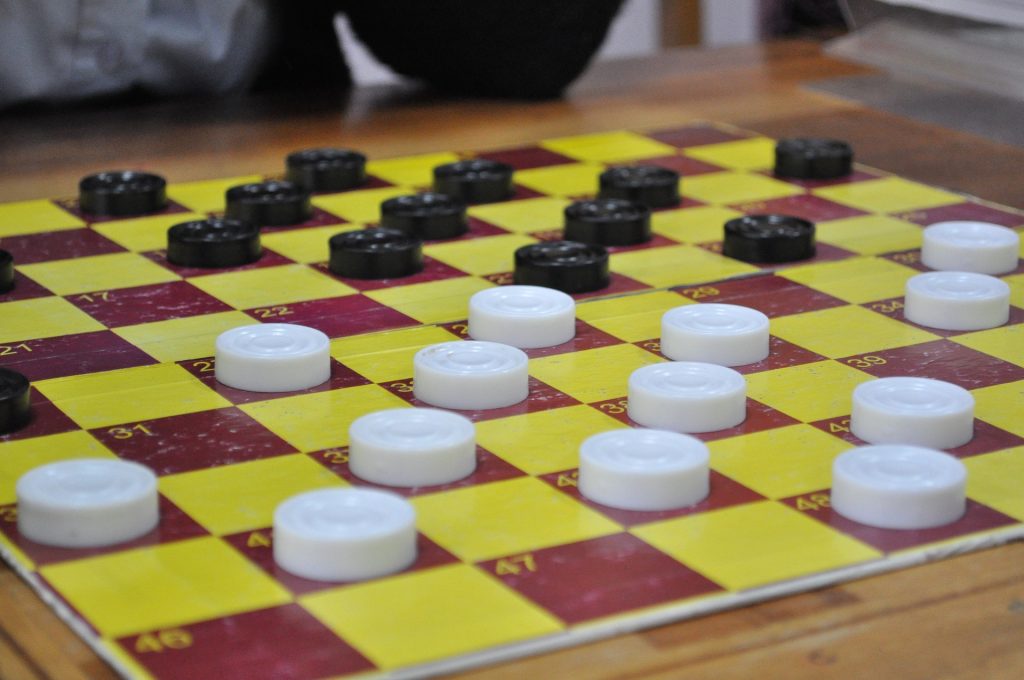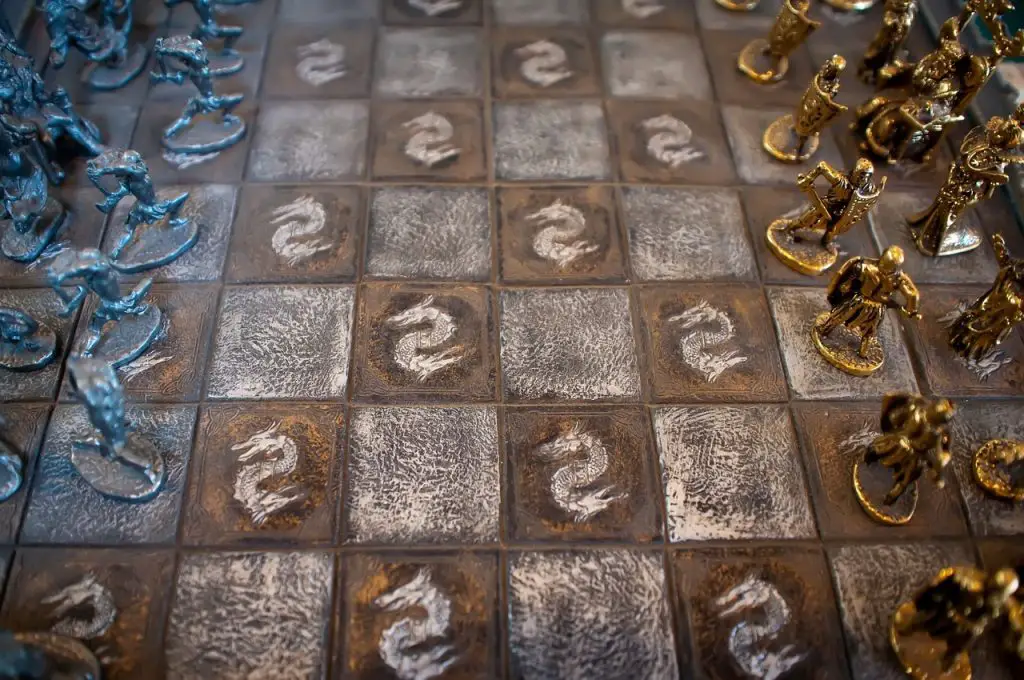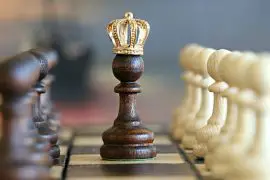
Chess and checkers are popular board games in the world. Both games require strategic thinking and planning but differ in their rules, gameplay, and board design. One of the most fundamental differences between these games is the board on which they are played.
A chess board is a square board consisting of 64 squares, arranged in an 8×8 grid. The board is typically made of wood or plastic and is divided into alternating light and dark-colored squares. Chess pieces are placed on the squares, and the same Game is played by moving the pieces according to specific rules. On the other hand, a checkers board, also known as a draughts board, is a square board consisting of 64 squares arranged in an 8×8 grid. The board is typically made of wood or plastic and is divided into alternating light and dark-colored squares, similar to a chessboard. Checkers pieces are placed on the squares, and the same Game is played by moving the pieces diagonally. Understanding the difference between chess and checkers boards is essential for players of both games. Using the right board for a particular game can lead to clarity and make it possible to play it correctly. It is also important to note that the different board designs can affect gameplay and strategy, making choosing the appropriate board for each Game essential. This article will compare the chess and checkers boards, highlighting their similarities and differences.
Overview of Chess Board :
Contents
The chess board is an essential component of the chess game, and it is critical to understanding the Game’s rules and strategy. Here is an overview of the chessboard:
Description of a Chess Board: A chess board is a square board that consists of 64 squares arranged in an 8×8 grid. The board’s dimensions are typically around 16 inches by 16 inches, and it can be made of various materials such as wood, plastic, or even stone. The board is often foldable, making it easy to transport and store.
Squares on a Chess Board: A chess board consists of 64 squares, with 32 light-colored squares and 32 dark-colored squares. The light-colored squares are typically white or cream, while the dark-colored squares are typically black or dark brown. Each player has 16 pieces, each occupying a square on the board.
Chess Board Layout: The chess board is divided into ranks and files, with each square being identified using a unique set of letters and numbers. The files labeled a to h, from left to right, while the ranks numbered from 1 to 8, from bottom to top. The bottom-right square of the board is always a light-colored square, and it is referred to as the white square. The starting position of the pieces is always the same, with the white pieces on the first two rows and the black pieces on the last two rows. The pawns occupy the second and seventh ranks, while the other pieces occupy the first and eighth ranks. The king is always placed on the e-file, with the queen next to it, and the other pieces are placed on either side of the queen and king, respectively.
In summary, the chess board is a square board with 64 squares arranged in an 8×8 grid, with 32 light and 32 dark-colored squares. The board is divided into ranks and files, and the starting position of the pieces is always the same.

Overview of Checkers Board :
The checkers’ board, or draughts board, is an essential component of the Game of checkers. Here is an overview of the checkers’ board:
Description of a Checkers Board: A checkers board is a square board that consists of 64 squares arranged in an 8×8 grid. The board’s dimensions are typically around 16 inches by 16 inches, and it can be made of various materials such as wood, plastic, or even marble. The board is often foldable, making it easy to transport and store. Squares on a Checkers Board: A checkers board also consists of 64 squares, with 32 light-colored squares and 32 dark-colored squares. However, unlike a chess board, the squares are only used by the game pieces to move diagonally, not by the pieces themselves. Each player has 12 pieces, each occupying a square on the board.
Checkers Board Layout: The checkers’ board is divided into ranks and files, similar to a chess board. However, the squares on the board are only used diagonally by the pieces. The starting position of the pieces is always the same, with each player’s pieces placed on the three rows closest to them. The pieces occupy only the dark squares, with the light squares left empty. The player with the darker-colored pieces moves first. The Game’s objective is to capture all of the opponent’s pieces or block them so they cannot move.
In summary, the checkers’ board is square consisting of 64 squares and it is arranged in an 8×8 grid with 32 light-colored squares and 32 dark-colored squares. The squares are used diagonally by the pieces, and the starting position of the pieces is always the same.
Differences between Chess and Checkers Boards :
While both chess and checkers boards are square boards consisting of 64 squares .It is arranged in an 8×8 grid. There are several differences between the two. Here are some of the critical differences between chess and checkers boards:
Square Colors: On a chess board, there are 32 light-colored squares and also 32 dark-colored squares, typically white or cream and black or dark brown, respectively. On the other hand, on a checker’s board, there are also 32 light-colored and 32 dark-colored squares, but they are typically red and black, respectively.
Number of Squares: Both chess and checkers boards have the same number of squares, which is 64.
However, the two games use squares differently. In chess, the squares are used to determine the position of the pieces, while in checkers, the squares are only used diagonally by the pieces.
Board Size: The board size for both chess and checkers is typically around 16 inches by 16 inches, but variations can vary depending on the manufacturer. Additionally, some checkers’ boards may be smaller as the Game can be played on smaller boards.
Starting Positions: In chess, the starting position of the pieces is always the same, with the white pieces on the first two rows and the black pieces on the last two rows. The pawns occupy the second and seventh ranks, while the other pieces occupy the first and eighth ranks. On the other hand, in checkers, each player’s pieces are placed on the three rows closest to them, and only the dark-colored squares are used.

In summary, the differences between chess and checkers boards include the square colors, the number of squares used by the pieces, the board size, and the starting positions of the pieces. While they may appear similar at first glance, the differences in the board layouts play a significant role in the Game’s rules and strategy.
The Importance of knowing it :
Knowing the difference between chess and checkers boards are essential for several reasons and they are two of the most significant reasons why understanding the differences is essential:
Playing the Wrong Game on the Wrong Board: One of the most apparent reasons why knowing the difference between the two boards is essential is to avoid playing the wrong Game on the wrong board. For instance, if a player uses a checkerboard to play chess, they will not be able to follow the correct rules of chess since the board layout is different. Using the right the board can lead to clarity and satisfaction, which can detract from the overall gaming experience.
Strategy Differences: Another important reason why knowing the difference between the two boards is essential is that the different board layouts require different strategies. Chess and checkers are two different games; their board layouts reflect this. The pieces use the squares on the chess board to move around the board, while the squares on the checkers’ board are only used diagonally by the pieces. Additionally, the starting positions of the pieces are different in both games. The board layout differences mean that each Game’s strategies and tactics are different. Therefore, knowing the difference in board layout can help a player develop better game strategies.
In summary, knowing the difference between chess and checkers boards are crucial to avoid playing the wrong Game on the wrong board and to develop better strategies for each Game. Understanding the nuances of each Game can enhance the player’s overall experience and lead to more rewarding and enjoyable gameplay.
Is a chess board the same as a checkers board?

In conclusion, chess and checkers boards may look similar ,But they have several differences. These differences include square colors, the number of squares, the board size, and starting positions. Understanding the differences between the two board layouts is crucial to avoid playing Games on the wrong board and developing better game strategies. By knowing the differences, players can appreciate each Game’s unique qualities and get the most out of their gaming experience. It is important to note that these differences may seem minor, but they have significant implications for the Game’s rules and strategies.
In summary, it is essential to distinguish between chess and checkers boards to enjoy and play each Game accurately and thoroughly. The differences in board layout reflect each Game’s distinct rules and strategies. By understanding these differences, players can develop better game strategies and have a more rewarding gaming experience.
The romantic relationship between king and queen ; here it is …





